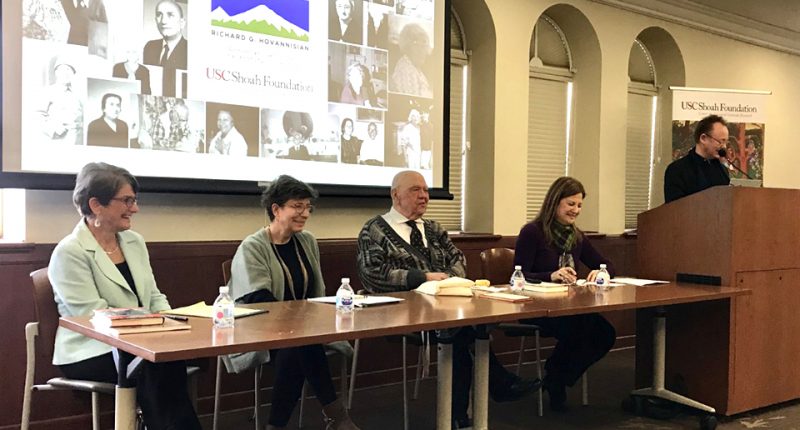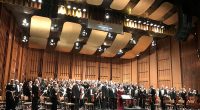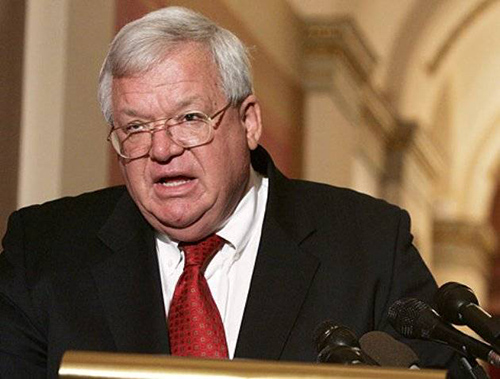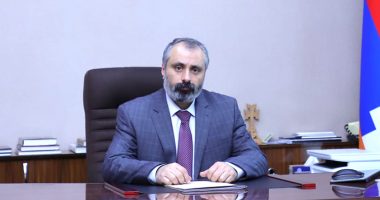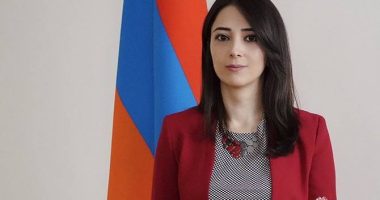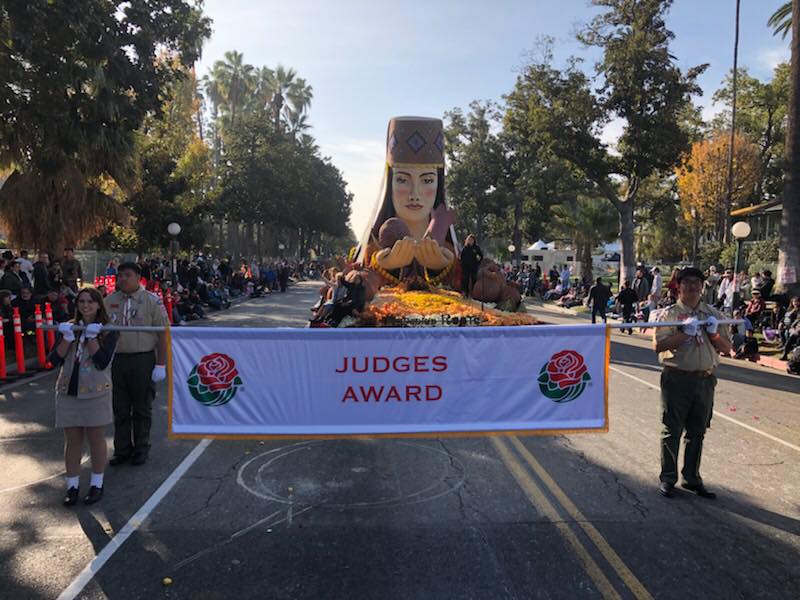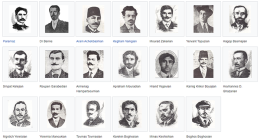The making of a comprehensive Armenian Genocide oral history project
USC SHOAH FOUNDATION — It started with a group of students in a Volkswagen van, traveling around Fresno with bulky tape recorders at the behest of their professor.
It became the world’s largest known collection of oral histories from survivors of the 1915 Armenian Genocide at the hands of the Ottoman Turks.
The roughly 1,000 audio-only interviews recorded by students of UCLA history professor Richard Hovannisian between 1972 and 2000 were entrusted to USC Shoah Foundation.
On March 5, Hovannisian and three of his star former students – Salpi Ghazarian, Lorna Touryan Miller and Tamar Mashigian – gave a talk at Doheny Library about how they amassed such a large repository of memory at so crucial a time, when denial of the atrocities by Turkey – which still denies the genocide – was in full throttle.
“We had something to prove,” said Ghazarian, now the director of the USC Institute of Armenian Studies, which co-sponsored the lecture with USC Shoah Foundation’s Center for Advanced Genocide Research. “This was a period when denialism was huge. We were on a scavenger hunt to mine the details that gave body and soul to what this generation lived.”
Hovannisian, now a professor emeritus at UCLA and president’s fellow at Chapman University, never set out to become one of the world’s foremost experts on Armenian history.
As a boy in the San Joaquin Valley, Hovannisian – the son of a survivor of the genocide that wiped out as many as 1.5 million Armenians during World War I – just wanted to fit in with his American friends.
But after he had rediscovered his heritage, learned Armenian, and then moved to Fresno to take a teaching job in the late 1950s, he was struck by the large number of Armenian families in certain neighborhoods.
“Block after block after block were Armenians,” he said. “And in the summer they would sit on their porches. And as you walk by they would greet you. And if you had a little baby in a stroller, it was even better. I now realize that every single one of those people had a story. Every one of those people had been a survivor.”
By the 1960s, he realized that the older generation was rapidly disappearing. It dawned on him that their firsthand accounts of the genocide were being lost to the ages.
He resolved to capture their stories. To do this he enlisted his students. It was a tall order.
“How do you teach students to do oral history when you have one class session to talk about the history of the Armenian genocide, and you have a second class session to talk about methods of oral history?” he said.
But while some of the students blazed through the questionnaire and thought they were done after 20 minutes, many interviews came back three-to-six hours long, rich with detail about not only the incomprehensible brutality – the forced marches, the disembowelments, the kidnapping, the rapes – but also the shared history, culture and communities that were eviscerated.
Mashigian, Miller and Ghazarian were among his standouts – students who grasped the gravity of the mission at hand. All of them are descendants of survivors.
Mashigian had a grandmother who, like so many other Armenian women, escaped death by living with Arab families and had her face tattooed by her captors to signify that she was property of a tribe.
“My interviewing started a long time ago because I always used to ask questions when I was a child,” she said.
Years later, she was one of Hovannisian’s first students. Back then, six or seven of them would pile into the van and head to Fresno, where they would be dropped off at an elderly survivor’s house. After the interview, they’d make a call to get picked up and dropped off at another residence for another interview. They’d spend the night at Hovannisian’s mother’s house.
“Professor Hovannisian had a questionnaire, he had a strategy,” she said. “He plotted everything in terms of how we were to interview, where we were to interview.”
In 1973, Miller’s father was taken to the hospital to be treated for a heart condition.
During his stay, the fact that he was the only survivor of a nine-member family that perished in the genocide hit home.
“Fortunately, he was well enough to come home,” she said. “And we began interviewing him immediately over several weeks to get his story from the beginning to the present.”
This prompted her to record more oral histories of survivors. Shortly after embarking on this career path, Miller enrolled in Hovannisian’s class, which refined her interviewing skills.
“His questionnaire included a lot of ethnographic information – very important to preserve the culture, to understand what life was like, what was the lifestyle of these people,” she said.
Often the latent trauma that many survivors had been living with for decades rose to the surface during the interviews. People in their 60s, 70s and 80s who’d been reluctant to talk became animated; anger would give way to sobs.
“I was surprised how many of them had never told their story to their children – none of it,” Miller said. “And so, many times when the children were there they were hearing the story for the first time.”
Most devastating to the women survivors were the stories of lost children. Some were kidnapped, others were given to Turkish families in hopes they’d have a better chance of survival. Others still were left behind because they’d encumber the larger family during the death marches through the desert.
“When you put (the interviews) all together, it’s in the collectivity of the testimony that you have the strength of it,” Hovannisian said. “The collectivity of it, where you feel the real horror and terror of what genocide is, and how extensive it can be – from one end of a country to the other – and how cruel it can be. Cruelty after cruelty after cruelty. And in many ways, genocide is a celebration of evil. The cruelty that people can inflict upon one another.”\

